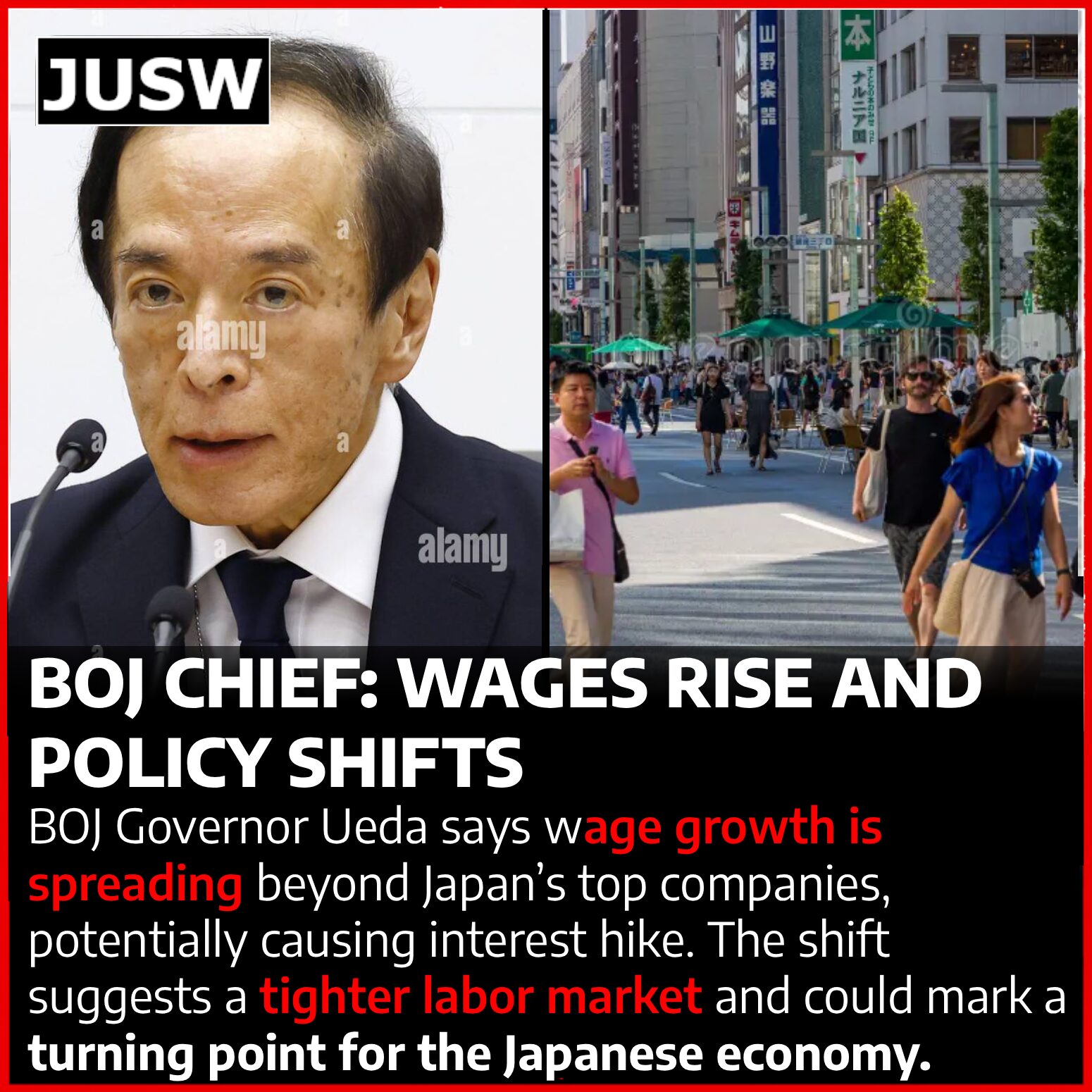Japan’s Wage Boom and the Case for a New Era in Monetary Policy
Bank of Japan (BOJ) Governor Kazuo Ueda has signaled a pivotal shift: wage growth is no longer confined to Japan’s largest corporations, it is now extending to small and medium-sized enterprises (SMEs). Speaking at the Jackson Hole symposium in late August 2025, Ueda highlighted that labor shortages and rising worker mobility, fueled by pandemic-era inflation, are forging a tighter labor market. In this climate, wage pressure could justify another interest rate increase from the BOJ soon.
This moment comes after a long era of suppressed wages and entrenched deflationary norms that weighed on monetary policy. Japan endured decades of near-zero or negative rates, a strategy aimed at breaking deflation, under programs such as Quantitative and Qualitative Easing (QQE), yield curve control (YCC), and massive asset purchases. In March 2024, under Ueda’s leadership, the BOJ ended negative interest rates for the first time in 17 years, raising the benchmark to 0–0.1 percent and marking the start of policy normalization.
Ueda’s cautious approach contrasts with growing hawkish sentiment on the BOJ’s Policy Board, where members like Hajime Takata and Naoki Tamura are increasingly vocal about moving ahead with rate rises in response to inflation and strong wage momentum. While the BOJ held its rate steady at 0.5 percent in July, the bank lifted its inflation outlook, reinforcing expectations of another move upward before year-end. Indeed, a recent poll shows nearly two-thirds of economists anticipate a 25 basis point raise to at least 0.75 percent in the fourth quarter, with October being the most likely timing.
The Governor and His Legacy
Kazuo Ueda, an esteemed academic with a PhD from MIT, assumed the governorship in April 2023. His appointment broke tradition, since the role is often filled by Ministry of Finance or BOJ insiders. Early in his tenure, he began undoing unconventional policies by ending QQE and yield curve control, steering Japan away from radical monetary experimentation.
Why a Rate Hike Matters
A rate increase today would mark another crucial milestone in Japan’s economic recovery. Persistent inflation, particularly food inflation above 8 percent, and declining core inflation still above the BOJ’s 2 percent target provide fodder for tightening. Wage gains outside large firms signal broad inflationary momentum, suggesting the wage-price spiral may finally be taking hold.
The potential impacts:
-
For Workers and Consumers: Rising wages can ease cost-of-living pressures and boost household spending.
-
For Financial Markets: Anticipation of higher rates may strengthen the yen and influence bond yields. Former foreign minister Taro Kono recently urged both rate hikes and fiscal reform to tackle a weak yen and unchecked inflation.
-
For the BOJ: Raising rates would reinforce the bank’s independence and credibility in steering the economy toward sustained inflation and stability.
However, risks remain. Ueda maintains caution over potential external shocks such as global protectionism or weak export demand and emphasizes data-driven decision-making.
A Brief History: BOJ’s Long Road to Policy Normalization
Founded in 1882, the BOJ gained legal independence through legislation in 1998 and has since been tasked with ensuring price stability and financial system integrity. Its escape from deflation began under Haruhiko Kuroda in 2013 with aggressive easing measures. But by 2024, it was clear even these radical tools had failed to fully reset inflation expectations. Ueda’s leadership marked a calculated pivot away from decade-long experimentation toward cautious normalization grounded in real economic signals.

